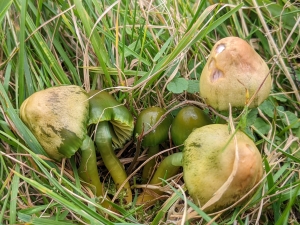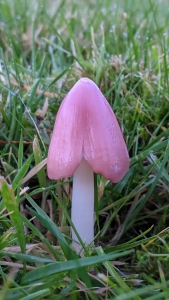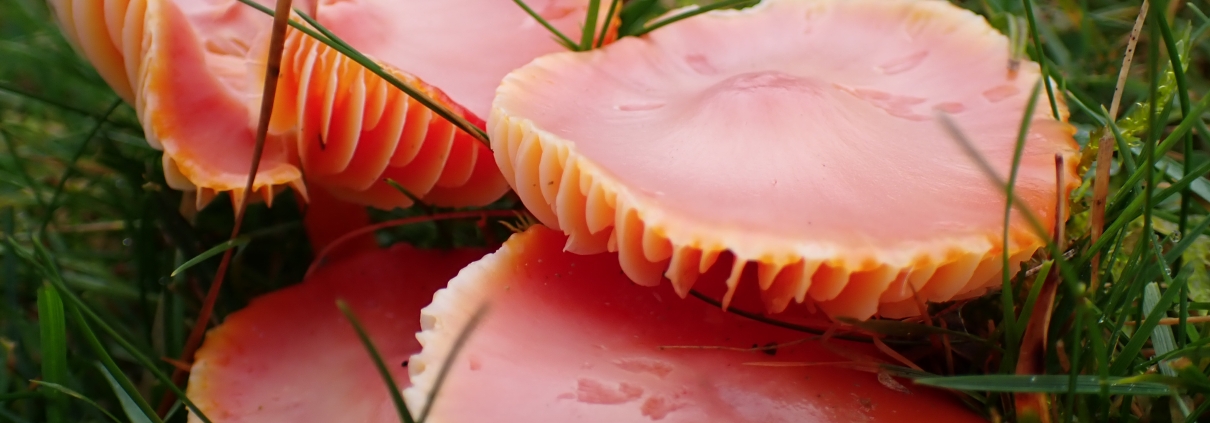Waxcap Surveys
One aspect of ecology that seems to be gaining more attention at the moment is waxcap grasslands. At E3 Ecology, we have recently undertaken several waxcap surveys of potentially valuable waxcap grassland sites. These are specialist surveys looking at the grassland fungi (mushrooms) present on a site, often over a few separate visits in autumn.
Waxcaps are a very colourful and attractive group of fungi and are the real ‘face’ of waxcap grasslands. They are not however, the only species we need to look for.

‘Waxcap grasslands’ is actually a bit of a catch-all term that is used to refer to a grassland habitat that is home to a variety of specialised fungi which includes members of the groups Clavariaceae (fairy clubs), Hygrocybe (waxcaps), Entoloma (pinkgills), Geoglossaceae (earth tongues), Dermoloma (crazed caps), Porpoloma (meadowcaps) and Cuphophyllus (fanvaults). For ease these are often collectively referred to as CHEGD species and their supporting habitat as ‘waxcap grassland’.

Due to a range of human-induced issues, waxcap grasslands are now hugely threatened across Northern Europe. The UK is home to some of the best examples of waxcap grasslands in the world and our excellent collections are hence of global importance. However, the grasslands, and the fungi they contain, are poorly understood and it generally requires specialists to be able to identify the fungi species.
“Sites rich in grassland fungi are scarce and threatened on a world scale, and the extent of this habitat in northern Europe has declined dramatically (Veen et al., 2009). Relative to these losses, Britain retains a high number of species-rich waxcap grasslands (Newton et al., 2003; Evans, 2004; Griffith et al. 2013), for which we clearly have an international responsibility.” – JNCC 2018
Waxcap grasslands tend to be habitats that have seen very little disturbance for a long time and have had little to no nutrients (such as fertiliser) added. Grazing and mowing however can be beneficial as the fungi like a short grass sward. This means that the sites we have surveyed for waxcaps have ranged from an upland sheep grazed pasture to an historical formal croquet lawn at a stately home.

At E3 we have been working with and learning from national and regional experts and also have our own capacity to undertake these specialist surveys. Waxcap surveys are generally undertaken in the late summer/autumn when the fungi are emerging from the ground or ‘fruiting’. Depending on the waxcap potential of the site, it might be that a single survey is recommended or surveys once a month September – November in order to catch a full suite of species.
Our surveys are necessary to help protect these important habitats and to ensure that waxcap grasslands on site are appropriately managed and looked after for the long term. In 2022 alone we worked on a variety of sites such as an upland pasture on the edge of the Northumberland National Park, a regenerated quarry site with previous polluted fields and a historic croquet lawn. Through these surveys we have been able to identify a large variety of CHEGD fungi species and highlight habitats of county and parish importance, as well as habitats that are still developing as waxcap grasslands.




Leave a Reply
Want to join the discussion?Feel free to contribute!